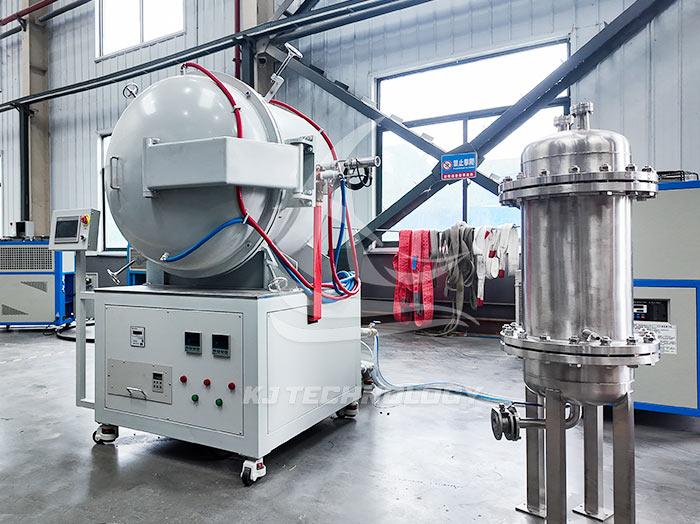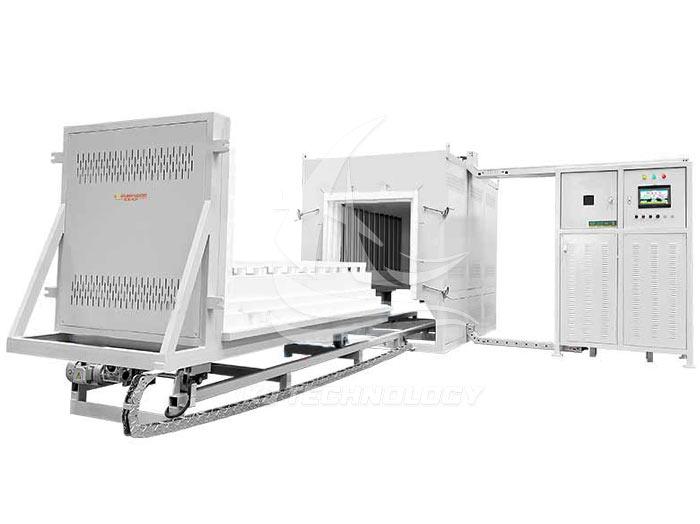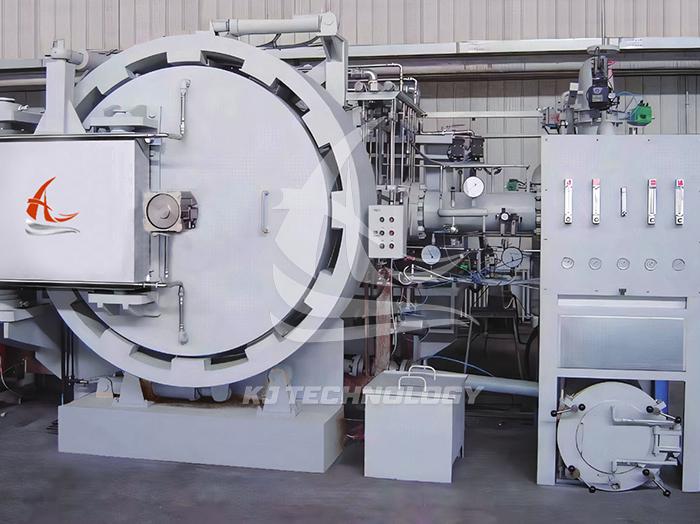Precautions for maintenance of gas vacuum furnace
 07-29-2025 Author: KJ technology
07-29-2025 Author: KJ technology
As a precision heat treatment equipment, the maintenance quality of gas vacuum furnace directly affects the equipment life, process stability, and product qualification rate. The following are systematic maintenance precautions, covering four aspects: daily maintenance, regular inspection, safety protection, and record management:
1. Daily maintenance
Furnace body cleaning
After daily operation: Wipe the surface of the furnace body with a soft cloth to remove impurities such as oil stains and metal powder, and avoid residual corrosive substances.
Weekly deep cleaning: Open the furnace door, use a vacuum cleaner or dry compressed air to clean the residue inside the furnace, and focus on removing dust accumulation near heating elements, thermocouple protective sleeves, and observation windows.
Caution: Do not use water or organic solvents to directly flush the furnace to prevent electrical components from short circuiting or seal aging.
Vacuum system inspection
Vacuum pump oil level: Check the mechanical pump oil level daily to ensure that the oil quality is clear and free of emulsification at 1/2~2/3 of the oil window. If the oil color turns black or contains water, it needs to be replaced immediately.
Vacuum pump operating status: Observe the vibration, noise, and exhaust smoke of the pump body, and shut down for maintenance in case of abnormalities (such as bearing wear and blade breakage).
Seal inspection: Check the O-rings or fluororubber seals on furnace doors, flanges, observation windows, and other parts every week, and replace them promptly if cracks or deformations are found.
Gas pipeline maintenance
Gas source purity: Ensure that the purity of protective gases such as nitrogen and argon is ≥ 99.99%, and regularly replace the pressure reducing valve filter of the gas cylinder.
Pipeline leakage detection: Apply soapy water to the air circuit joints every month, observe for bubbles, and focus on checking the solenoid valve, mass flow meter, and quick connector.
Gas flow calibration: Calibrate the gas flow sensor with a standard flow meter every quarter, and adjust or replace it when the error exceeds ± 5%.
2. Regular maintenance
Heating system maintenance
Heating element detection: Use a megohmmeter to measure the insulation resistance of the heating wire or graphite heating element every six months, and the resistance value should be ≥ 10M Ω. If the resistance value decreases or local redness occurs, the damaged element needs to be replaced.
Thermocouple calibration: Send thermocouples to the metrology department for calibration every year to ensure that the temperature measurement error is ≤ ± 1 ℃. Re calibrate the temperature controller parameters after calibration.
Temperature uniformity test: 9 temperature measurement points (including the center and four corners) are evenly arranged in the furnace every year, and the temperature is raised to the working temperature without load. The temperature difference between each point is recorded, with a requirement of ≤± 5 ℃.
Deep maintenance of vacuum system
Vacuum pump overhaul: replace mechanical pump oil and clean oil filter every 2000 hours; Replace the molecular pump bearing grease every 5000 hours and check the wear of the turbine blades.
Vacuum valve maintenance: Disassemble the vacuum globe valve and bypass valve every year, clean the sealing surface of the valve seat, and replace damaged valve discs or springs.
Furnace leak detection: Every 2 years, a helium mass spectrometer leak detector is used to conduct an overall leak detection of the furnace body, with a focus on inspecting welding seams, observation windows, and electrode interfaces. The leak rate should be ≤ 1 × 10 ⁻⁹ Pa · m ³/s.
Lubrication of mechanical components
Furnace door hinge: Apply high-temperature resistant grease (such as molybdenum disulfide) every month to ensure smooth opening and closing.
Transmission chain: Spray lubricating oil on the chain every quarter, adjust the tightness, and avoid sticking or jumping teeth.
Fan bearings: Disassemble the fan every six months, clean the bearings and replenish high-speed lubricating grease, and replace deformed or worn fan blades.
3. Security protection
Electrical safety
Grounding inspection: Use a grounding resistance tester to measure the grounding resistance of the equipment every month, and the resistance value should be ≤ 4 Ω.
Insulation test: Use a 500V megohmmeter to measure the insulation resistance of power lines and heating elements to ground every quarter, and the resistance value should be ≥ 1M Ω.
Emergency stop function: Test the emergency stop button every month to ensure that the heating, vacuum, and gas systems immediately stop running when pressed.
Fire and explosion prevention
Cleaning inside the furnace: It is strictly prohibited to leave flammable materials (such as oil stains and plastic fragments) inside the furnace. Clean the carbides after each use.
Fire extinguishing device: Check the pressure of the carbon dioxide fire extinguisher every six months to ensure that the pointer is in the green area; Replace dry powder fire extinguisher chemicals annually.
Ventilation system: Clean the dust accumulation in the exhaust duct every month to ensure a wind volume of ≥ 500m ³/h and avoid the accumulation of harmful gases.
Personnel protection
Personal equipment: Wear heat-resistant gloves, goggles, and dust masks during operation, and wear chemical protective clothing when handling toxic materials.
Training and assessment: Annual safety operation training is organized, and only those who pass the assessment can be employed. The focus is on training practical skills such as vacuum pump oil replacement and gas leak emergency response.
4. Record management
Maintenance file
Establish an electronic record of the equipment, recording the maintenance date, content, replacement part model, and maintenance personnel information for each maintenance.
Save purchase invoices and quality assurance certificates for key components such as heating elements and vacuum pumps for easy traceability of quality responsibilities.
fault analysis
Fill in the 'Fault Analysis Report' after each fault, recording the fault phenomenon, cause, handling measures, and preventive suggestions.
Statistically analyze high-frequency faults (such as vacuum pump oil emulsification and thermocouple offset), and develop targeted improvement plans (such as adding gas ballast valves and using armored thermocouples).
spare part inventory
Based on historical consumption data, reserve commonly used spare parts (such as O-rings, vacuum pump oil, heating wires) to ensure inventory levels meet the demand for 3 months.
Regularly inventory spare parts, eliminate expired or damaged parts, replenish newly purchased spare parts, and update the inventory list.








